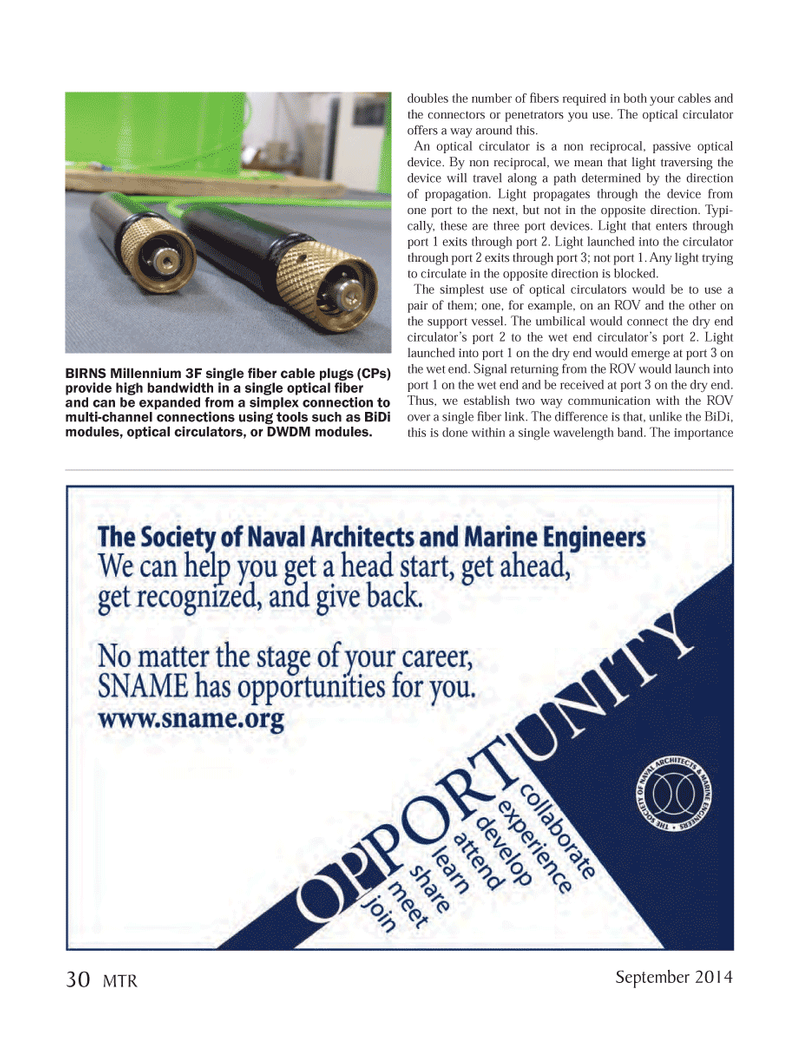
Page 30: of Marine Technology Magazine (September 2014)
Ocean Observation: Gliders, Buoys & Sub-Surface Networks
Read this page in Pdf, Flash or Html5 edition of September 2014 Marine Technology Magazine
doubles the number of fi bers required in both your cables and the connectors or penetrators you use. The optical circulator offers a way around this.
An optical circulator is a non reciprocal, passive optical device. By non reciprocal, we mean that light traversing the device will travel along a path determined by the direction of propagation. Light propagates through the device from one port to the next, but not in the opposite direction. Typi- cally, these are three port devices. Light that enters through port 1 exits through port 2. Light launched into the circulator through port 2 exits through port 3; not port 1. Any light trying to circulate in the opposite direction is blocked.
The simplest use of optical circulators would be to use a pair of them; one, for example, on an ROV and the other on the support vessel. The umbilical would connect the dry end circulator’s port 2 to the wet end circulator’s port 2. Light launched into port 1 on the dry end would emerge at port 3 on the wet end. Signal returning from the ROV would launch into port 1 on the wet end and be received at port 3 on the dry end.
Thus, we establish two way communication with the ROV over a single fi ber link. The difference is that, unlike the BiDi, this is done within a single wavelength band. The importance
BIRNS Millennium 3F single fi ber cable plugs (CPs) provide high bandwidth in a single optical fi ber and can be expanded from a simplex connection to multi-channel connections using tools such as BiDi modules, optical circulators, or DWDM modules. 30 MTR
September 2014
MTR #7 (18-33).indd 30 8/26/2014 11:42:03 AM

 29
29

 31
31
